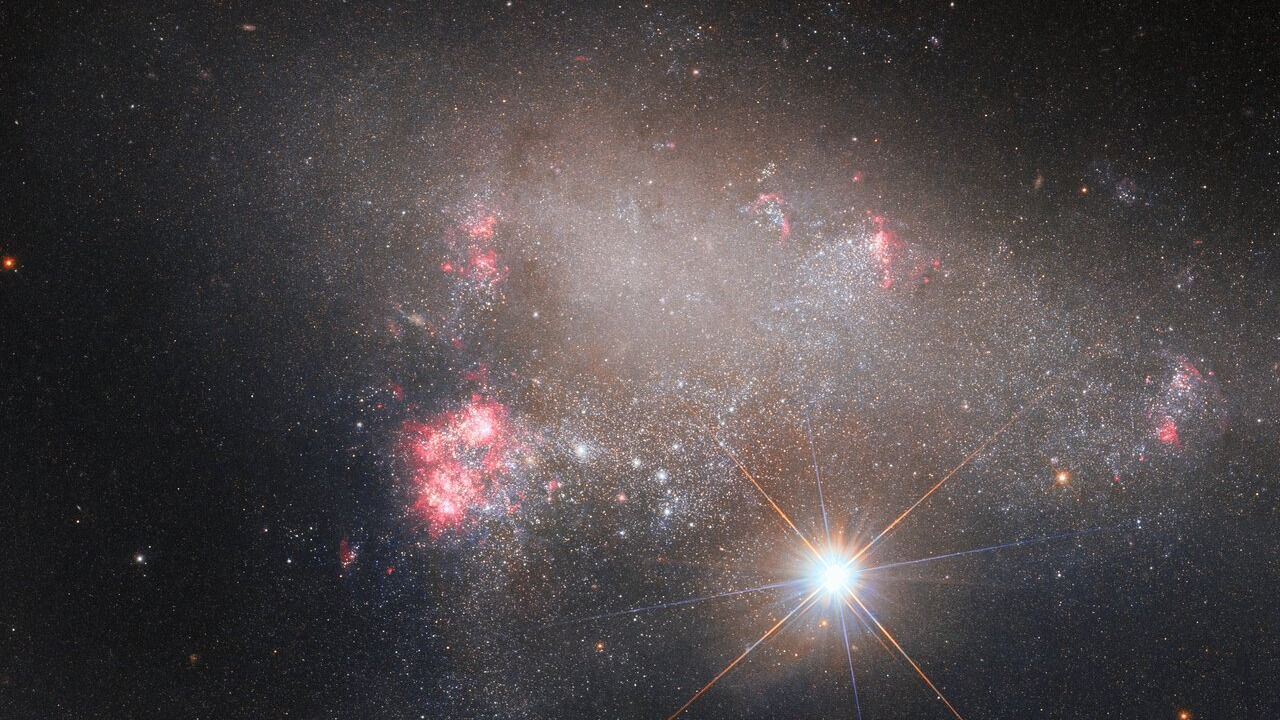
A bright star photobombed a new image of a galaxy bursting with new stars.
The Hubble Space Telescope, which is a joint mission of NASA and the European Space Agency (ESA), photographed an irregular galaxy known as Arp 263, or NGC 3239. The galaxy lies approximately 25 million light-years from Earth in the constellation Leo.
The Arp 263 galaxy appears to the left of the bright star in the new Hubble image. The bright star, called BD+17 2217, dominates the telescope's view.
Arp 263 has dense, vibrant regions of newly formed stars, giving it a patchy appearance. Astronomers say this patchwork is the result of a recent merger between two galaxies, according to a statement from ESA.
Related: The best Hubble Space Telescope images of all time!
The image came from two different Hubble cameras: the telescope's Wide Field Camera 3 and Advanced Camera for Surveys.
"The interloping foreground star, BD+17 2217, is adorned with two sets of criss-crossing diffraction spikes. The interaction of light with Hubble's internal structure means that concentrated bright objects such as stars are surrounded by four prominent spikes," ESA officials said in the statement.
"Since this image ... was created using two sets of Hubble data, the spikes from both images surround this stellar photobomber. The spikes are at different angles because Hubble was at different orientations when it collected the two datasets."
The data used to produce the image was taken as part of two separate studies to observe areas of recent stellar explosions, called supernovas, and to identify target subjects for the NASA James Webb Space Telescope. This next-generation telescope is peering deep into the universe's history, often using Hubble data as a guide.
About 10 years ago, a supernova or star explosion known as SN 2012A was detected in Arp 263, making the galaxy an ideal candidate for further investigation.
A supernova occurs when a massive star reaches the end of its life and explodes in a brilliant burst of light, releasing large amounts of material into space. Astronomers target these areas to study the stellar remnants of massive star explosions, which are believed to play a key role in distributing essential elements throughout the universe.
Hubble's Advanced Camera for Surveys was used as part of a larger initiative to image all the previously unobserved "peculiar galaxies" in the Arp catalog, including Arp 263.
Its ragged appearance is likely the result of a collision between two galaxies, creating the perfect environment for new star formation (represented as the bright pink patches in the image).







